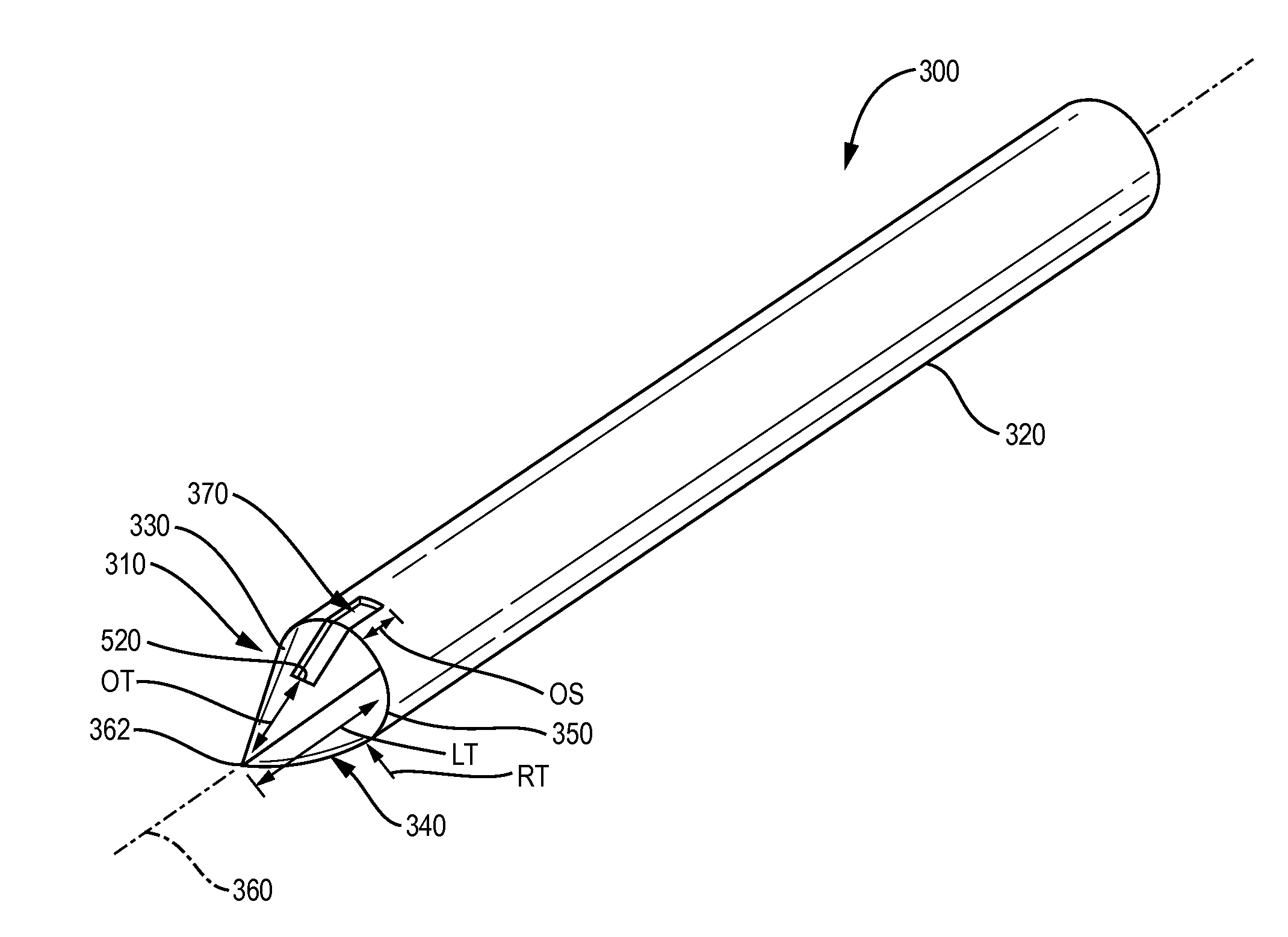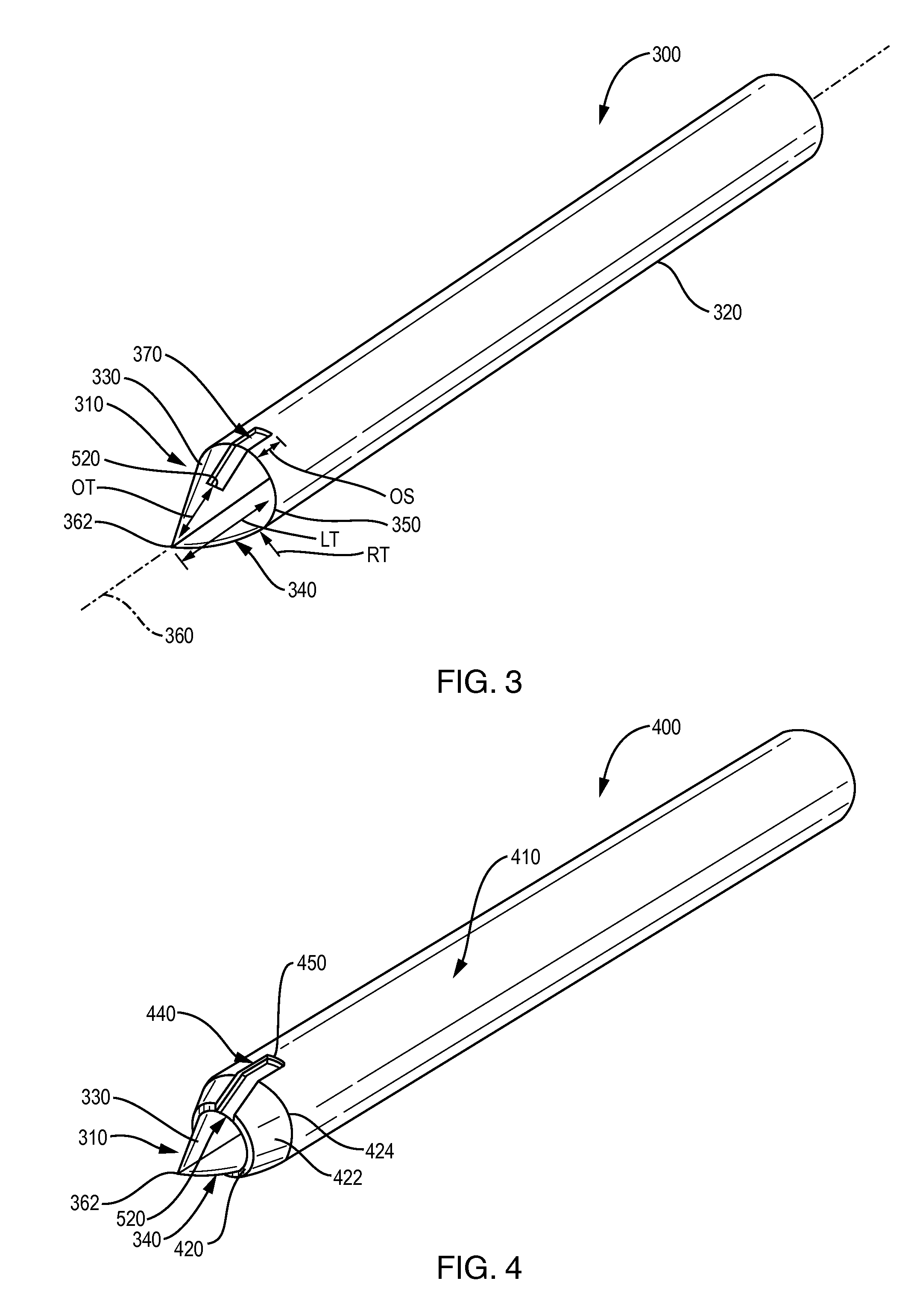Intravascular needle and catheter assembly
a catheter and needle technology, applied in the field of intravascular needles and catheter assemblies, can solve the problems of considerable pain and anxiety for patients, significant failure rate of experienced and skilled practitioners, and difficulty in ensuring the safety of patients, so as to minimize potential damage
- Summary
- Abstract
- Description
- Claims
- Application Information
AI Technical Summary
Benefits of technology
Problems solved by technology
Method used
Image
Examples
Embodiment Construction
[0032]FIG. 3 shows an insertion needle 300 having a distal tip according to an illustrative embodiment. The tip 310 is formed on the distal end of the needle shaft 320. The shaft 320 in this embodiment defines a cylinder sized in an appropriate diameter (14-24 G, for example) for use in an arterial or IV insertion application. The needle is constructed from a suitable metal or other biocompatible material, such as stainless steel. The tip 310 can be formed by a variety of techniques as described above. For example, the tip can be built up using weldments and / or solder on the end of a cylindrical needle shaft. The shaft end can also be formed into the depicted tip using a swaging or similar plastic deformation technique. The tip can alternatively comprise a separate unit that is affixed to the end of the cylindrical shaft using appropriate attachment techniques. The tip includes a first (upper) side 330 defining a flattened tapered surface and an opposing second (bottom) surface 340 ...
PUM
 Login to View More
Login to View More Abstract
Description
Claims
Application Information
 Login to View More
Login to View More - R&D
- Intellectual Property
- Life Sciences
- Materials
- Tech Scout
- Unparalleled Data Quality
- Higher Quality Content
- 60% Fewer Hallucinations
Browse by: Latest US Patents, China's latest patents, Technical Efficacy Thesaurus, Application Domain, Technology Topic, Popular Technical Reports.
© 2025 PatSnap. All rights reserved.Legal|Privacy policy|Modern Slavery Act Transparency Statement|Sitemap|About US| Contact US: help@patsnap.com



